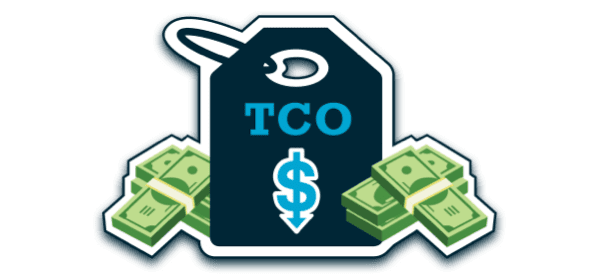Cloud and Data Security
IndustryTotal Cost of Ownership: Why It’s Important for Businesses
A total cost of ownership (TCO) analysis is vital to examine the financial impact of implementing new technologies in business. In information technology, assessing the TCO provides a broader view of the investment and the value of the product over its lifespan.
By
Dave Wallen
3 minute read
A total cost of ownership (TCO) analysis is vital to examine the financial impact of implementing new technologies in business. In information technology, assessing the TCO provides a broader view of the investment and the value of the product over its lifespan. For ROI estimation, identifying the TCO is essential, which is sadly often neglected or underestimated.
Understanding the Total Cost of Ownership
According to Investopedia, TCO is the purchase price of an asset or product, plus the costs of operation. A TCO analysis helps businesses determine the difference between short-term (purchase price) and long-term (total cost of ownership) costs of a product or system. It helps make an informed purchasing decision when selecting the right vendor from multiple alternatives. In general, a lower total cost of ownership offers better value in the long run.
Why Is TCO Important?
Knowing the upfront cost of a purchase is easy; it’s the hidden costs that are hard to anticipate. A TCO analysis helps in understanding the indirect expenses, such as maintenance, support and license fee, that would add up during the lifecycle of the product.
Businesses use the TCO to analyze the viability of potential business deals or purchases over the long term. This analysis provides an insight into which solution would bring a positive ROI and supplement business growth. It also helps you stay prepared for unexpected financial surprises.
TCO: How Is It Calculated?
To come close to a realistic TCO, you must identify and include all the elements associated with the purchase while calculating the total cost of ownership.
To help you understand the concept of TCO better, let’s consider a simple example.
A company plans to purchase a new coffee vending machine for the workplace. To determine the TCO of the vending machine, the company should include additional costs apart from the initial purchase price such as:
- Installation
- Coffee beans
- Milk
- Water
- Cups
- Energy
- Maintenance
- Repair
- License/subscription
TCO in IT
“Gartner defines total cost of ownership as a comprehensive assessment of information technology or other costs across enterprise boundaries over time. For IT, TCO includes hardware and software acquisition, management and support, communications, end-user expenses and the opportunity cost of downtime, training and other productivity losses.”
The components of TCO may vary depending on your industry and business needs. Be sure to include the following components while analyzing the TCO for your next technology investment.
Acquisition Costs
These are the costs of the software or application, including software licenses or subscription fees. It also includes the costs of installation and employee training.
Operating Costs
These are recurring costs throughout the lifespan of the software. It includes setting up, maintenance as well as updates of the product, ongoing training with every software update, support services and security of your software.
Resource Costs
You will need knowledgeable personnel or professionals to run the software to gain optimum results. Hiring in-house technicians or third-party consultants to manage the software translates into additional costs.
Spanning Backup: Lowest TCO in Its Class
In the current business environment brought about by the COVID-19 pandemic, reducing costs and having a cost-effective backup and recovery solution have become increasingly important. While cost saving is indispensable for businesses, technological improvement is vital in order to survive and stay competitive.
Spanning is the global leader in SaaS cloud-to-cloud backup solutions. Our end-user functionality, easy-to-use yet powerful administrator capabilities and cloud-native benefits combine with simple and transparent pricing to provide the lowest total cost of ownership of any other backup and recovery solution in its class. Cloud-native and purpose-built, our solution requires no hardware, installed software, network bandwidth, data center space, management, or maintenance.
Learn more about Spanning’s lowest TCO offerings for Google Workspace and Microsoft 365, or dive in and get started today.
Get Started